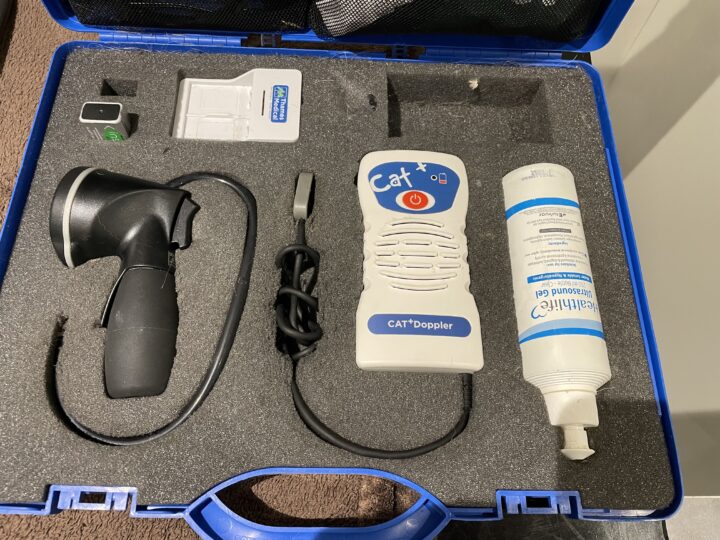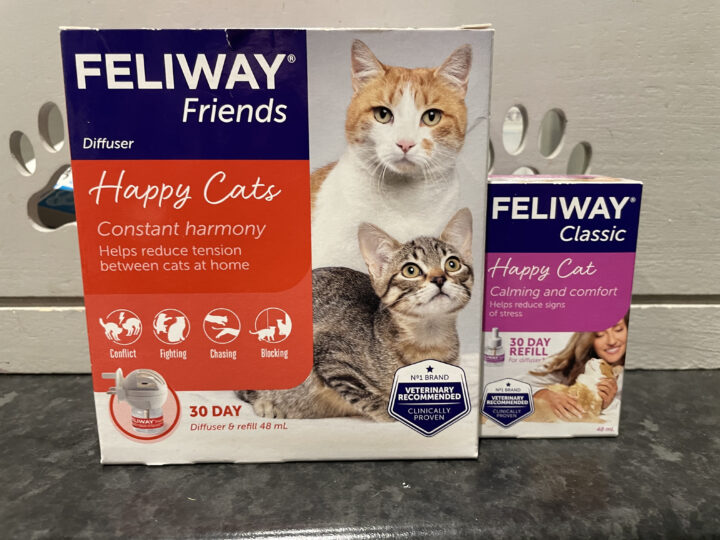Due to advances in veterinary treatment and care, our feline friends are living to a much older age. However, these advanced life stages are accompanied by more health problems, with one issue being a decline in cognitive ability due to natural ageing of the brain. Cognitive dysfunction syndrome (CDS) is a term describing age-related reduction in cognitive ability and is a disorder characterised by behavioural changes in senior cats.
Examples of cognitive ability that may be affected by CDS include (Xu, 2024):
Although CDS may be diagnosed in cats as young as 10 years old, the prevalence significantly rises with increasing age (Garosi, 2020). In studies by Moffat and Landsberg (2003) and Gunn-Moore et al. (2007), it was reported that 28 percent of cats between 11 and 14 years of age develop at least one behavioural sign of CDS, and this number increases to 50 percent in cats older than 15 years.
Clinical signs of cognitive dysfunction syndrome
Common behavioural signs associated with CDS in cats include:
- Spatial disorientation: becoming confused about where they are
- Temporal disorientation: confusion about what the time is
- Changes in the sleep–wake cycles
- Inappropriate toileting (urination and/or defecation)
- Inappropriate/excessive vocalisation
- Altered interactions with the owners and/or other household pets
- Poor coat condition due to reduced grooming
- General behavioural changes
- Changes in interest in food
- Changes in activity levels
There have been several studies looking at what the most common clinical sign is in cats with CDS, and the most common finding was excessive vocalisation, particularly at night
There have been several studies looking at what the most common clinical sign is in cats with CDS, and the most common finding was excessive vocalisation, particularly at night (Landsberg et al., 2010,2012; Sordo et al., 2020). To help remember the clinical signs, an acronym specific to signs of CDS in cats has been proposed by Sordo and Gunn-Moore (2021) – VISHDAAL:
- Vocalisation (excessive)
- Interactions (alterations in)
- Sleep–wake cycle (changes in)
- House soiling
- Disorientation
- Activity levels (alterations in)
- Anxiety
- Learning and memory
Many of the behavioural changes listed above are also common clinical signs of some of the common senior diseases we see, including hyperthyroidism, diabetes mellitus, osteoarthritis, hypertension and chronic kidney disease (CKD). Due to this, any cat presenting with these clinical signs should have a full clinical examination and work-up to rule out other disorders.
Diagnosing cognitive dysfunction syndrome in cats
CDS is a diagnosis of exclusion; this means other causes for the behavioural signs will need to be ruled out before a diagnosis of CDS can be made.
Obtain a full history
A crucial part of the diagnostic process is obtaining a full history from the owner to establish the onset of signs and their frequency. It is important to set aside enough time in the consult to thoroughly discuss things with the owner to try to establish if any other factors are leading to the clinical signs; therefore, for senior cat consults, it may be beneficial to allocate an extended time slot.
| Senior pet clinics are a great service that can be offered by veterinary nurses. An added benefit is that owners sometimes feel more relaxed with a nurse and mention some of the clinical signs they may feel are irrelevant. |
Perform a full clinical examination
Doppler blood pressure measurements are preferred as oscillometric measurements in patients weighing less than 7kg can be inaccurate

The next step is to perform a full clinical examination, including measurement of blood pressure; the veterinary surgeon may decide if bloods and urinalysis are also necessary. Doppler blood pressure measurements are preferred as oscillometric measurements in patients weighing less than 7kg can be inaccurate (Figure 1) (Duke-Novakovski, 2017). Many senior cats will have concomitant disorders, so it is important to identify and treat these before reassessing if clinical signs of CDS are still present. Once any other clinical disorders/diseases have been ruled out, a diagnosis of CDS can be made.
Treatment and environmental management
The treatment and environmental management of CDS is an area where veterinary nurses can play a key role in supporting the cat and their owner. CDS is not currently curable, but there are various management techniques that can improve the cat’s quality of life (QOL).
It can be quite stressful for owners to see their cat become confused and disorientated, while the night-time vocalisation can cause broken sleep for the owner. Hopefully, by implementing appropriate management the improvement in the cat’s QOL will help the owner and maintain the important cat–owner bond.
Environmental enrichment
The aim of environmental enrichment is to provide mental stimulation and increase activity levels, resulting in improved cognition due to enhanced growth and survival of neurons
The aim of environmental enrichment is to provide mental stimulation and increase activity levels, resulting in improved cognition due to enhanced growth and survival of neurons (Gunn-Moore et al., 2007).
Studies have shown that suboptimal environmental stimulation increases the risk of CDS developing in later life and can aggravate existing CDS in older cats (Gunn-Moore, 2016); therefore, environmental stimulation is important for all cats, young and old.
Methods of environmental enrichment include:
- Outside access
- Toys or objects for play and hunting behaviour
- Objects to climb on
- Puzzle feeders
- Increased human interaction
There are other environmental adjustments that can be made to aid senior cats with the aim of reducing any potential stress and frustration including:
- Raise food and water bowls slightly from the floor to make them easier to reach, especially for arthritic cats
- Provide lots of comfortable bedding in accessible areas
- Ensure plenty of large, low-sided litter trays are available in accessible places
- Consider the type of cat litter used in trays: is it worth changing to a softer type that is gentler on paws?
- Allow senior cats quiet time away from people and other animals as and when they want it
- Use of synthetic pheromones may help reduce anxiety (Figure 2)
If CDS is particularly severe, environmental modifications can actually make things worse and cause more confusion and distress, exacerbating signs of cognitive dysfunction syndrome

If CDS is particularly severe, environmental modifications can actually make things worse and cause more confusion and distress, exacerbating signs of CDS. Therefore for cats with severe CDS, it is advised to keep changes to a minimum or avoid making changes altogether.
Dietary management
Diets high in antioxidants and omega-3 fatty acids have proven beneficial for our senior cats and may prove beneficial in those suffering CDS (Seibert, 2017); however, more definitive studies are required. Dietary supplements may also be considered.
Medication
There have been extensive studies in the use of medical management of dementia in humans and CDS in dogs, but there is a gap in the literature when considering cats. At the time of writing, there are currently no drugs licensed for the treatment of CDS in cats. Some drugs have been used to treat particular clinical signs, including anxiolytics and antidepressants.
Conclusion
Feline CDS is a condition that requires more research to enable us to better understand it and to identify optimal treatment options. It can cause great stress for owners and put significant pressure on the cat–owner bond. VNs play a crucial role in the support for these cases, using various nursing skills to counsel owners.











